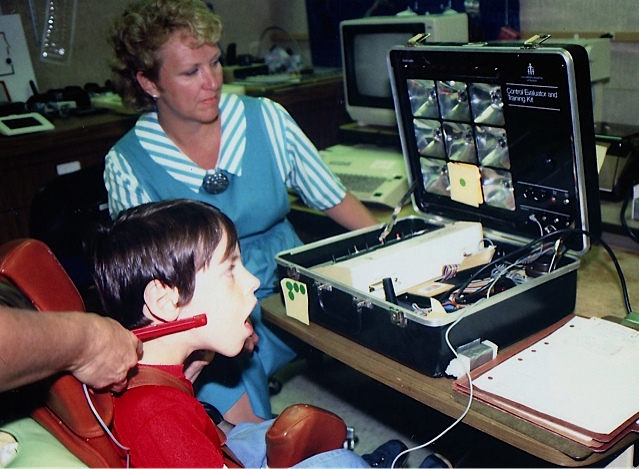
Here Alan is being evaluated to see what his accuracy would be to use a switch and scanning method. You can see nine sections (the squares on the top part of the box). Each section has a light and the light would move from left to right from row to bottom row. Once the light reached the target area (where the paper is placed), Alan would activate the cheek switch being held by the tester. Scanning requires full attention and the user must be able to activate a switch consistently. To activate the switch shown, Alan needed to slightly turn his head to the right and touch the switch with his cheek. The evaluation kit allows the therapists to adjust the speed that the light moves and measures accuracy.
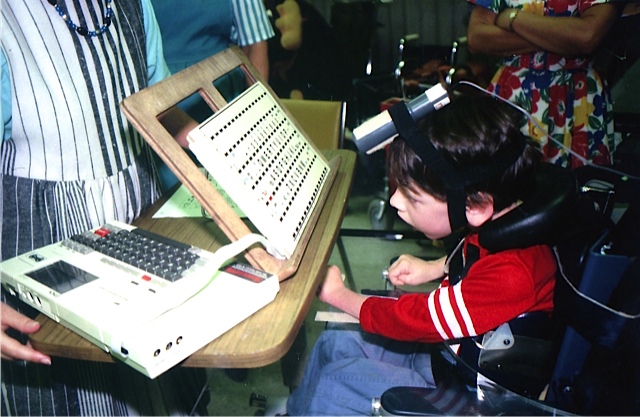
Here Alan is being evaluated with an Epson Real Voice/ Speech Pac device. He is using a larger laser pointer (same as shown in last picture of part one) to activate a light board.
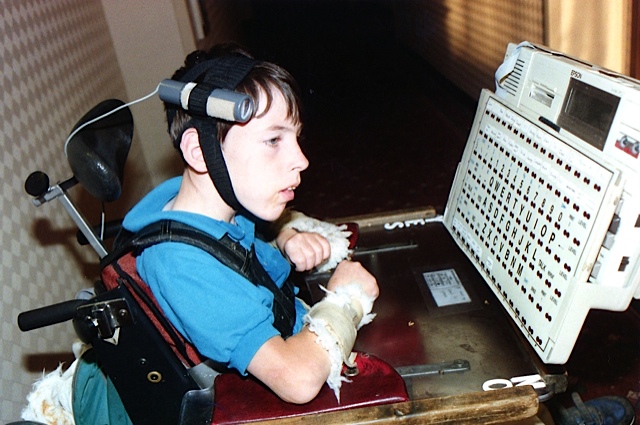
It was decided that Alan did well with the Epson using the light pointer method and this became his first voice output system. We also moved the light from the center of his head to his right side. It’s difficult to see but there are red sensor targets (dots) that Alan needed to hold his head still enough for the laser light to activate the desired location. We also decided he needed to have his arms restrained to provide him with better posture and positioning. His right arm is extremely spastic and usually in constant movement. Having his arms restrained increased his accuracy and speed to use the Epson. The Epson is mounted to his wheelchair and can go where he goes. It’s basically always in the same position which allows Alan to hit the targets more accurately.
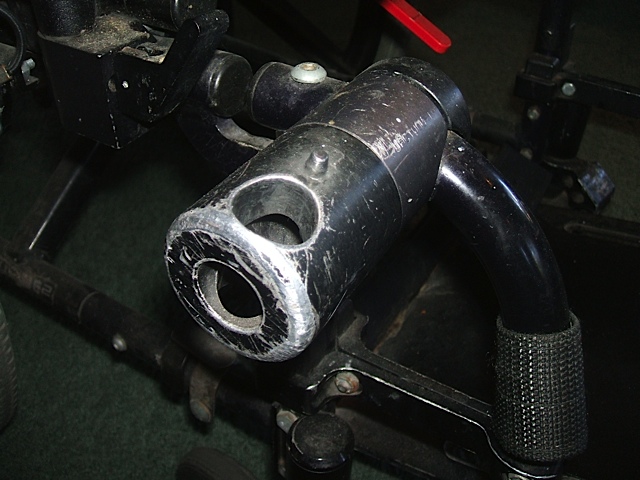
This is a picture of a banged up mount (they are shiny black when new). You will see a small pin to the right of the hole. The post fits into the hole and is secured when the pin fits into the collar. I learned to make certain the pin was in the correct place so the post wouldn’t turn while moving the wheelchair.
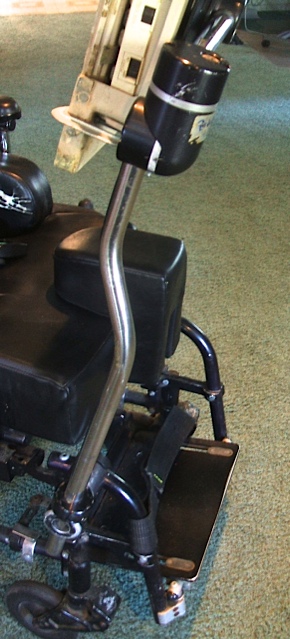
This is an example of the post placed in the mount and the communication device is secured on the post and positioned properly for the specific user.

Some educators felt he needed a more advanced system. He also enjoyed going to different technology labs and demonstrations. This was a Light Talker manufactured by Prentke Romich Company. This system could be set up for different scanning techniques and two switch scan.
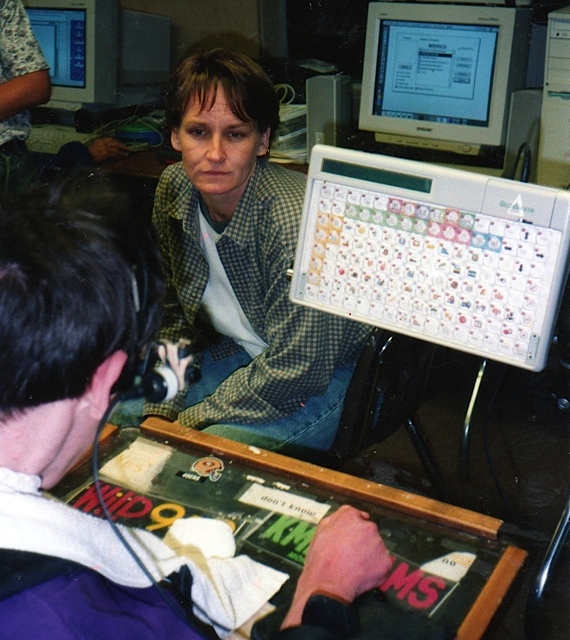
Alan is being evaluated for yet another system, Delta Talker, with a smaller light pointer positioned on the right side of his head. The factory made headband was not secure enough to withstand Alan’s head movements. The elastic bands worked much better. This system was also manufactured by Prentke Romich Company. After Alan used the Epson Real Voice Speech Pac for several years, he transitioned to a Liberator (Prentke Romich Company). His method of selection was via scanning and switches. I never understood this system and couldn’t follow all the lights and where he was. It had audible scanning feedback but that didn’t help me. And for some reason, I don’t have a picture of Alan using the Liberator.
Once again, please check back for more on Alan’s communication development.


